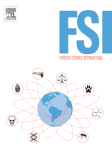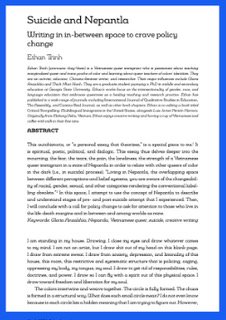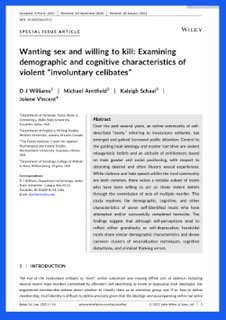By Julia H. Littell, Therese D. Pigott, Karianne H. Nilsen, Stacy J. Green, Olga L. K. Montgomery
Background
Lack of access to and use of water, sanitation and hygiene (WASH) cause 1.6 million deaths every year, of which 1.2 million are due to gastrointestinal illnesses like diarrhoea and acute respiratory infections like pneumonia. Poor WASH access and use also diminish nutrition and educational attainment, and cause danger and stress for vulnerable populations, especially for women and girls. The hardest hit regions are sub-Saharan Africa and South Asia. Sustainable Development Goal (SDG) 6 calls for the end of open defecation, and universal access to safely managed water and sanitation facilities, and basic hand hygiene, by 2030. WASH access and use also underpin progress in other areas such as SDG1 poverty targets, SDG3 health and SDG4 education targets. Meeting the SDG equity agenda to “leave none behind” will require WASH providers prioritise the hardest to reach including those living remotely and people who are disadvantaged.
Objectives
Decision makers need access to high-quality evidence on what works in WASH promotion in different contexts, and for different groups of people, to reach the most disadvantaged populations and thereby achieve universal targets. The WASH evidence map is envisioned as a tool for commissioners and researchers to identify existing studies to fill synthesis gaps, as well as helping to prioritise new studies where there are gaps in knowledge. It also supports policymakers and practitioners to navigate the evidence base, including presenting critically appraised findings from existing systematic reviews.
Methods
This evidence map presents impact evaluations and systematic reviews from the WASH sector, organised according to the types of intervention mechanisms, WASH technologies promoted, and outcomes measured. It is based on a framework of intervention mechanisms (e.g., behaviour change triggering or microloans) and outcomes along the causal pathway, specifically behavioural outcomes (e.g., handwashing and food hygiene practices), ill-health outcomes (e.g., diarrhoeal morbidity and mortality), nutrition and socioeconomic outcomes (e.g., school absenteeism and household income). The map also provides filters to examine the evidence for a particular WASH technology (e.g., latrines), place of use (e.g., home, school or health facility), location (e.g., global region, country, rural and urban) and group (e.g., people living with disability). Systematic searches for published and unpublished literature and trial registries were conducted of studies in low- and middle-income countries (LMICs). Searches were conducted in March 2018, and searches for completed trials were done in May 2020. Coding of information for the map was done by two authors working independently. Impact evaluations were critically appraised according to methods of conduct and reporting. Systematic reviews were critically appraised using a new approach to assess theory-based, mixed-methods evidence synthesis.
Results
There has been an enormous growth in impact evaluations and systematic reviews of WASH interventions since the International Year of Sanitation, 2008. There are now at least 367 completed or ongoing rigorous impact evaluations in LMICs, nearly three-quarters of which have been conducted since 2008, plus 43 systematic reviews. Studies have been done in 83 LMICs, with a high concentration in Bangladesh, India, and Kenya. WASH sector programming has increasingly shifted in focus from what technology to supply (e.g., a handwashing station or child's potty), to the best way in which to do so to promote demand. Research also covers a broader set of intervention mechanisms. For example, there has been increased interest in behaviour change communication using psychosocial “triggering”, such as social marketing and community-led total sanitation. These studies report primarily on behavioural outcomes. With the advent of large-scale funding, in particular by the Bill & Melinda Gates Foundation, there has been a substantial increase in the number of studies on sanitation technologies, particularly latrines. Sustaining behaviour is fundamental for sustaining health and other quality of life improvements. However, few studies have been done of intervention mechanisms for, or measuring outcomes on sustained adoption of latrines to stop open defaecation. There has also been some increase in the number of studies looking at outcomes and interventions that disproportionately affect women and girls, who quite literally carry most of the burden of poor water and sanitation access. However, most studies do not report sex disaggregated outcomes, let alone integrate gender analysis into their framework. Other vulnerable populations are even less addressed; no studies eligible for inclusion in the map were done of interventions targeting, or reporting on outcomes for, people living with disabilities. We were only able to find a single controlled evaluation of WASH interventions in a health care facility, in spite of the importance of WASH in health facilities in global policy debates. The quality of impact evaluations has improved, such as the use of controlled designs as standard, attention to addressing reporting biases, and adequate cluster sample size. However, there remain important concerns about quality of reporting. The quality and usefulness of systematic reviews for policy is also improving, which draw clearer distinctions between intervention mechanisms and synthesise the evidence on outcomes along the causal pathway. Adopting mixed-methods approaches also provides information for programmes on barriers and enablers affecting implementation.
Conclusion
Ensuring everyone has access to appropriate water, sanitation, and hygiene facilities is one of the most fundamental of challenges for poverty elimination. Researchers and funders need to consider carefully where there is the need for new primary evidence, and new syntheses of that evidence. This study suggests the following priority areas:
Impact evaluations incorporating understudied outcomes, such as sustainability and slippage, of WASH provision in understudied places of use, such as health care facilities, and of interventions targeting, or presenting disaggregated data for, vulnerable populations, particularly over the life-course and for people living with a disability;
Improved reporting in impact evaluations, including presentation of participant flow diagrams; and
Synthesis studies and updates in areas with sufficient existing and planned impact evaluations, such as for diarrhoea mortality, ARIs, WASH in schools and decentralisation. These studies will preferably be conducted as mixed-methods systematic reviews that are able to answer questions about programme targeting, implementation, effectiveness and cost-effectiveness, and compare alternative intervention mechanisms to achieve and sustain outcomes in particular contexts, preferably using network meta-analysis.
Campbell Systematic Reviews, 17(4) 2021.





















